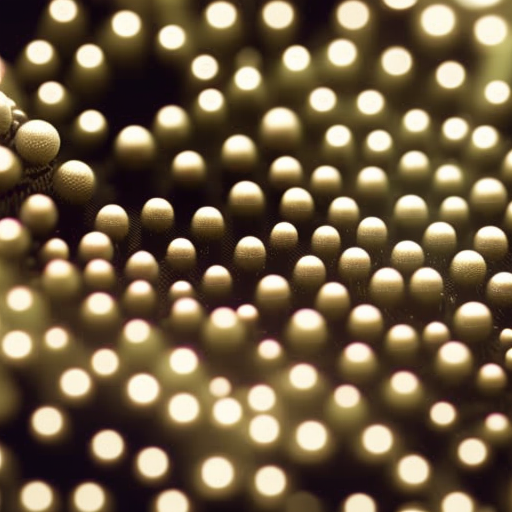Nanobiotechnology: A Fusion of Nanotechnology and Biology
Nanobiotechnology is an interdisciplinary field that combines nanotechnology and biology to develop innovative solutions for various applications. It involves the manipulation and control of nanoscale materials and devices to study and modify biological systems at the molecular level. By harnessing the unique properties of nanoparticles, scientists and engineers can create novel tools and techniques to understand, diagnose, and treat diseases, as well as enhance the performance of biological processes.
1. Nanoparticles in Medicine
One of the most promising applications of nanobiotechnology is in medicine. Nanoparticles can be engineered to deliver drugs directly to specific cells or tissues, improving the efficacy and reducing the side effects of treatments. These nanoparticles can be functionalized with targeting molecules that recognize and bind to specific receptors on the surface of diseased cells, allowing for precise drug delivery. Additionally, nanoparticles can be used as imaging agents to detect and monitor diseases such as cancer, providing real-time information about the location and progression of tumors.
2. Biosensors and Diagnostics
Nanobiotechnology has revolutionized the field of diagnostics by enabling the development of highly sensitive and specific biosensors. These biosensors can detect and quantify biomarkers associated with various diseases, such as proteins, nucleic acids, and metabolites. Nanoparticles, such as quantum dots and gold nanoparticles, are often used as signal transducers in these biosensors due to their unique optical and electrical properties. By combining nanotechnology with molecular biology techniques, researchers can create biosensors that provide rapid and accurate diagnostic results, leading to early disease detection and personalized medicine.
3. Tissue Engineering and Regenerative Medicine
In tissue engineering and regenerative medicine, nanobiotechnology plays a crucial role in designing and fabricating biomaterials that mimic the structure and function of native tissues. Nanoscale scaffolds made from biocompatible materials can provide a supportive environment for cells to grow and differentiate into specific tissue types. These scaffolds can be functionalized with bioactive molecules to promote cell adhesion, proliferation, and tissue regeneration. Furthermore, nanotechnology-based techniques, such as electrospinning and 3D bioprinting, allow for the precise fabrication of complex tissue structures with high resolution.
4. Environmental Applications
Nanobiotechnology also offers solutions for environmental challenges. Nanoparticles can be used to remove pollutants from water and air through processes such as adsorption, catalysis, and filtration. For example, nanomaterials like carbon nanotubes and graphene oxide have shown great potential in water purification by adsorbing heavy metals and organic contaminants. Additionally, nanobiotechnology can be employed in the development of biosensors for environmental monitoring, enabling the detection and quantification of pollutants in real-time.
5. Ethical and Safety Considerations
While nanobiotechnology holds great promise, it also raises ethical and safety concerns. The potential toxicity of nanoparticles and their long-term effects on human health and the environment need to be thoroughly investigated. Additionally, the responsible use and disposal of nanomaterials should be carefully regulated to minimize any potential risks. Ethical considerations, such as privacy and informed consent, should also be addressed when using nanobiotechnology in medical applications.
In conclusion, nanobiotechnology is a rapidly advancing field that combines the power of nanotechnology and biology to create innovative solutions for a wide range of applications. From medicine and diagnostics to tissue engineering and environmental remediation, nanobiotechnology offers exciting possibilities for improving human health and the environment. However, it is essential to address the ethical and safety considerations associated with this field to ensure its responsible and sustainable development.












